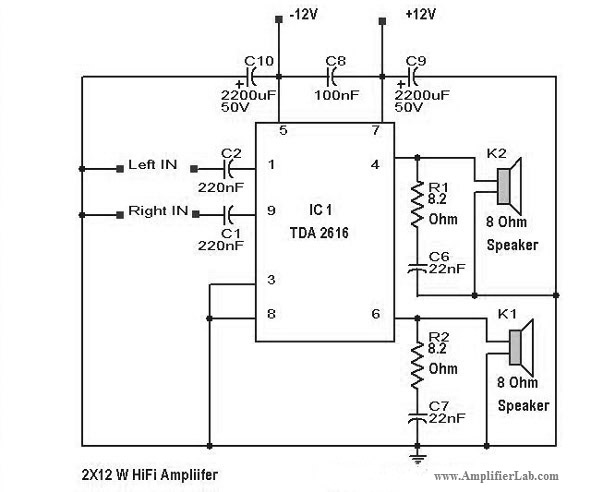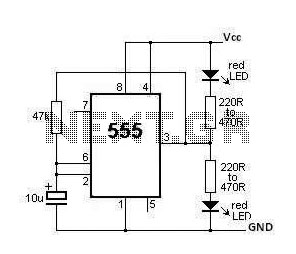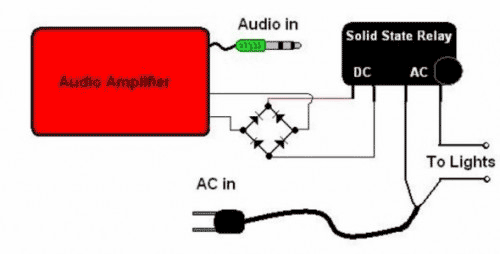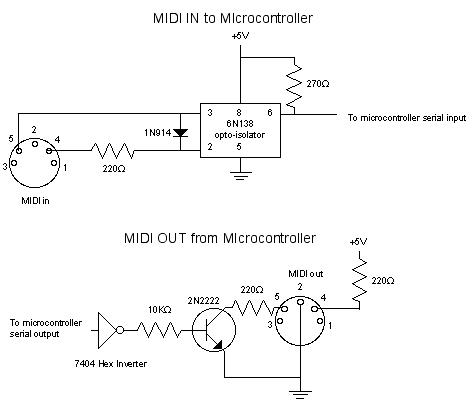
Audio Filters Circuits Projects
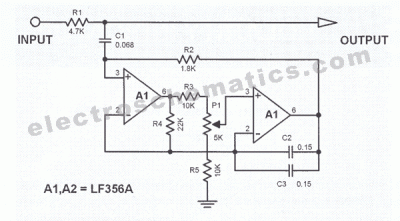
This audio noise filter circuit is a bandpass filter designed for the audio frequency range. It effectively filters out unwanted signals that fall outside the audio frequencies. The circuit consists of two filters: a low-pass filter and a high-pass filter configured in a cascade arrangement. Both filters are second-order filters with a 24 dB/octave filtering capability. Frequency-Shift Keying (FSK) is a form of frequency modulation where the modulating signal alters the output frequency between predetermined values. In cases where demodulating FSK signals presents challenges, the FSK filter circuit described here is beneficial. This simple FSK filter can be constructed easily. Higher-order filters are typically designed with two or more cascaded sections, but this fourth-order filter requires only one operational amplifier (OA) integrated circuit, resulting in lower distortion and reduced intermodulation. The resistor values represent the load on the operational amplifier output, with the maximum load for the TL081 being 2 kΩ. Resistors R1-R4 create a 2.5 kΩ impedance, making it suitable for external connections. Most universal radio receivers feature a wide bandwidth, which may not be ideal for amateur radio operators. Higher-quality models with narrower bandwidths tend to be more expensive, often out of reach for the average radio hobbyist. However, a wide bandwidth receiver can still be used to listen to amateur single-sideband (SSB) and continuous wave (CW) stations. The ripple filter circuit is specifically designed to eliminate 50 Hz ripple signals from audio lines, a common noise issue in European countries. In many instances, it may not be feasible to eliminate the source of ripple noise, but the active notch filter presented here effectively addresses this issue. It allows the desired signals to pass while attenuating the unwanted noise. A subsonic filter is primarily utilized in low-frequency applications, as very low frequencies can introduce distortion in music recording or playback, regardless of the recording medium used. To mitigate these undesired low frequencies, subsonic filters, such as the circuit outlined here, are employed.
The audio noise filter circuit described incorporates a bandpass filter architecture, which is essential for maintaining audio fidelity by eliminating out-of-band noise. The cascade configuration of the low-pass and high-pass filters ensures that only signals within the specified audio frequency range are allowed to pass, while frequencies below and above this range are attenuated effectively. The second-order filter design provides a steep roll-off of 24 dB per octave, which is advantageous for precise signal processing in audio applications.
The integration of an operational amplifier (TL081) in the FSK filter circuit simplifies the design and enhances performance. The choice of resistor values is critical, as they determine the output load and overall impedance, ensuring compatibility with various audio sources and minimizing distortion. The design considerations for the 2.5 kΩ impedance are particularly relevant in maintaining signal integrity across different components.
The ripple filter circuit's capability to eliminate 50 Hz noise is particularly important in regions where this frequency is prevalent due to electrical infrastructure. The active notch filter's design allows it to selectively target and suppress this noise without impacting the desired audio signals, showcasing the effectiveness of active filtering techniques in audio applications.
Furthermore, the subsonic filter plays a vital role in audio processing by addressing low-frequency distortions that can detract from the listening experience. By removing these unwanted low frequencies, the subsonic filter ensures that the audio output remains clear and free from interference, which is crucial for high-quality music reproduction.
Overall, the combination of these filtering techniques within the audio noise filter circuit provides a comprehensive solution to common audio signal issues, enhancing the performance of audio systems and ensuring a cleaner, more enjoyable listening experience.This audio noise filter circuit is a bandpass filter for audio frequency band. It filters unwanted signals that are lower or higher than the audio frequencies. It has 2 filters: a low pass filter and a high pass filter in a cascade configuration. Both filters are second-order filters with a 24 dB/octave fiter capability. The 3. FSK or Frequency-Sh ift Keying is a form of frequency modulation in which the modulating signal shifts the output freq. between predetermined values. If problems arise in demodulating FSK signals, it is helpful to use the FSK filter circuit presented here. The Frequency-Shift Keying filter is very simple and it can be built. Filters with high orders are designed usually with 2 or more cascaded sections. This order 4 filter need only one OA IC, so we can achieve lower distorsions, lower intermodulation Resistors values represent the load on the OA output, the maximum TL081 load is 2k ©.
R1-R4 build a 2. 5k © impedance and so the external. Most universal radio receivers have a very wide bandwidth that is not particulary for radio amateurs. The better models with narrower bandwith are almost always priced higher, too high for the reach of an average radio hobbyist.
However, if one wants to use a wide bandwidth receiver to listen to amateur SSB and CW stations. The ripple filter circuit is specially deisgned to filter out 50 Hz ripple signals from audio lines. A 50 Hz noise is usually found in european countries. In many cases, it is not possible to remove the cause of ripple noise. The featured active filter notch filter solves the problem in suvh cases. It allows the desirable. A subsonic filter is mostly used in low frequency technology. Most often, the very low frequencies create distorsions in music recording or reproduction. This happens independent of the applied recording medium. To remove this unwanted low frequencies, subsonic filters like the circuit featured here is used. The subsonic. 🔗 External reference
The audio noise filter circuit described incorporates a bandpass filter architecture, which is essential for maintaining audio fidelity by eliminating out-of-band noise. The cascade configuration of the low-pass and high-pass filters ensures that only signals within the specified audio frequency range are allowed to pass, while frequencies below and above this range are attenuated effectively. The second-order filter design provides a steep roll-off of 24 dB per octave, which is advantageous for precise signal processing in audio applications.
The integration of an operational amplifier (TL081) in the FSK filter circuit simplifies the design and enhances performance. The choice of resistor values is critical, as they determine the output load and overall impedance, ensuring compatibility with various audio sources and minimizing distortion. The design considerations for the 2.5 kΩ impedance are particularly relevant in maintaining signal integrity across different components.
The ripple filter circuit's capability to eliminate 50 Hz noise is particularly important in regions where this frequency is prevalent due to electrical infrastructure. The active notch filter's design allows it to selectively target and suppress this noise without impacting the desired audio signals, showcasing the effectiveness of active filtering techniques in audio applications.
Furthermore, the subsonic filter plays a vital role in audio processing by addressing low-frequency distortions that can detract from the listening experience. By removing these unwanted low frequencies, the subsonic filter ensures that the audio output remains clear and free from interference, which is crucial for high-quality music reproduction.
Overall, the combination of these filtering techniques within the audio noise filter circuit provides a comprehensive solution to common audio signal issues, enhancing the performance of audio systems and ensuring a cleaner, more enjoyable listening experience.This audio noise filter circuit is a bandpass filter for audio frequency band. It filters unwanted signals that are lower or higher than the audio frequencies. It has 2 filters: a low pass filter and a high pass filter in a cascade configuration. Both filters are second-order filters with a 24 dB/octave fiter capability. The 3. FSK or Frequency-Sh ift Keying is a form of frequency modulation in which the modulating signal shifts the output freq. between predetermined values. If problems arise in demodulating FSK signals, it is helpful to use the FSK filter circuit presented here. The Frequency-Shift Keying filter is very simple and it can be built. Filters with high orders are designed usually with 2 or more cascaded sections. This order 4 filter need only one OA IC, so we can achieve lower distorsions, lower intermodulation Resistors values represent the load on the OA output, the maximum TL081 load is 2k ©.
R1-R4 build a 2. 5k © impedance and so the external. Most universal radio receivers have a very wide bandwidth that is not particulary for radio amateurs. The better models with narrower bandwith are almost always priced higher, too high for the reach of an average radio hobbyist.
However, if one wants to use a wide bandwidth receiver to listen to amateur SSB and CW stations. The ripple filter circuit is specially deisgned to filter out 50 Hz ripple signals from audio lines. A 50 Hz noise is usually found in european countries. In many cases, it is not possible to remove the cause of ripple noise. The featured active filter notch filter solves the problem in suvh cases. It allows the desirable. A subsonic filter is mostly used in low frequency technology. Most often, the very low frequencies create distorsions in music recording or reproduction. This happens independent of the applied recording medium. To remove this unwanted low frequencies, subsonic filters like the circuit featured here is used. The subsonic. 🔗 External reference
